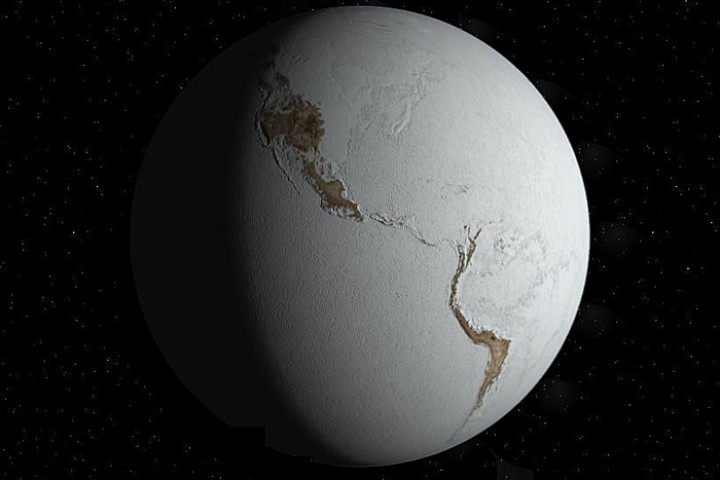Is there life on Earth thanks to acid rain?

Is there life on Earth thanks to acid rain? Huge storm lasting 100,000 YEARS melted thick glaciers covering our planet 650 million years ago
650 million years ago, the Earth was in its Marinoan glaciation period
The whole planet was a snowball covered in glaciers 1.2 miles (2 km) thick
Evidence of chalk deposits were found in rocks, suggesting intense acid rain
This melting could have led to the Cambrian Explosion when most major animal phyla appeared
From the icy glaciers in the Arctic, to the vast jungles of South America, the Earth today has widely varying climates.
But this has not always been then case, and 650 million years ago, our planet was a snowball, covered in glaciers as thick as 1.2 miles (2km).
New research suggests that an intense period of acid rain, lasting 100,000 years, could be responsible for melting the vast glaciers and pushing the Earth towards the environment we know today.
Researchers from Peking University in Beijing suggest that intense chemical weathering was likely the cause of the end of the Marinoan glaciation period.
The period, which occurred from 635 to 650 million years ago saw huge glaciers covering the entire planet, in an event called the Snowball Earth.
Until now, there has been little evidence to show how this icy period came to an end.
In their paper, published in PNAS, the researchers, led by Kang-Jung Huang, wrote: 'According to the snowball Earth hypothesis, cap carbonate deposition was driven by intense continental weathering during deglaciation, but geochemical evidence is lacking.'
To understand what happened, the researchers reconstructed the history of chemical weathering during, and following the end of the Marinoan glaciation in South China.
Their results suggest that the period may have come to an end as carbon dioxide and other greenhouse gases built up from volcanic activity.
The high levels of carbon dioxide in the atmosphere led to very acidic rain, which would have washed over the continents and left chemical signatures in the surface rocks.
Acid rain led to the development of cap carbonates – characteristic layers of rock that form when chalk is present in water.
THE END OF THE MARINOAN PERIOD
To understand how the period ended, the researchers reconstructed the history of chemical weathering during, and following the end of the Marinoan glaciation in South China.
Their results suggest that the period may have come to an end as carbon dioxide and other greenhouse gases built up from volcanic activity.
The high levels of carbon dioxide in the atmosphere led to very acidic rain, which would have washed over the continents and left chemical signatures in the surface rocks.
Acid rain led to the development of cap carbonates – characteristic layers of rock that form when chalk is present in water.
The researchers' chemical analysis of rocks in southern China showed there was direct evidence for chemical weathering, suggesting that the acid rain could have brought an end to the ice age.
And the acid rain storm wasn't simply an outburst over a few hours.
The researchers believe that the downpour lasted hundreds of thousands of years towards the end of the Marinoan period, pushing it out of its freezing state.
The researchers added: 'Our finding confirms intense chemical weathering at the onset of deglaciation.'
The de-glaciation could in turn have led to The Cambrian Explosion, a period beginning around 541 million years ago during which most major animal phyla appeared.
As the glaciers melted, huge amounts of nutrients were released into the oceans.
This caused oxygen levels to rise deep in the oceans as bacteria and other microbes flourished, resulting in more plankton.
This plankton buried organic carbon in seafloor sediments when they died, causing the proportion of oxygen in the atmosphere to rise.
THE CAMBRIAN EXPLOSION
The Cambrian Explosion, around 541 million years ago, was a period when a wide variety of animals burst onto the evolutionary scene.
Before about 580 million years ago, most organisms were simple, composed of individual cells occasionally organised into colonies.
Over the following 70 or 80 million years, the rate of evolution accelerated and the diversity of life began to resemble that of today.
It ended with the Cambrian-Ordovician extinction event, approximately 488 million years ago.
The latest discovery pushes back the date of multicellular animal evolution to 60 million years before the Cambrian explosion started.
dailymail.co.uk
Acid rain causes the waters to become acidic. Lakes and soil can neutralize natural levels of acid, but acid rain is too strong for lakes to deal with.
